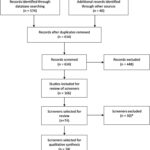Tuning your VAG car equipped with an EDC17 engine control unit can significantly improve performance. However, it’s crucial to understand the process and potential risks before making any modifications. This guide provides a comprehensive overview of EDC17 tuning for VAG cars, outlining essential maps and considerations for a safe and effective Stage 1 tune.
Understanding EDC17 Tuning
EDC17 is a sophisticated engine management system controlling various parameters like fuel injection, boost pressure, and ignition timing. Tuning involves modifying these parameters to enhance performance. A Stage 1 tune is a basic modification that optimizes the engine within its safe operating limits, typically resulting in noticeable power and torque gains without requiring hardware upgrades.
Key Maps for EDC17 Stage 1 Tuning
Several key maps within the EDC17 ECU require adjustment for a successful Stage 1 tune:
- Torque Limiter: This map defines the maximum torque the engine can produce. Increasing this value allows for higher torque output.
- Torque to IQ (Injection Quantity): This map dictates the relationship between torque demand and fuel injection quantity. Adjustments ensure sufficient fuel delivery for the increased torque.
- Driver’s Wish: This map represents the driver’s accelerator pedal input. Modifying this map can improve throttle response.
- Driver’s Wish Limiter: This map limits the driver’s wish input. Adjustments may be necessary to accommodate increased power.
- Boost Limiter: This map sets the maximum boost pressure allowed by the turbocharger. Increasing this value, within safe limits, enhances power output.
- Boost (N75 Control): This map controls the turbocharger’s wastegate, regulating boost pressure. Fine-tuning this map ensures optimal boost delivery and minimizes spikes.
- Smoke Limiters (by MAF and MAP): These maps restrict fuel injection to prevent excessive smoke. Careful adjustments are crucial to maintain emissions compliance while maximizing power.
- EGR (Exhaust Gas Recirculation) Off: Disabling or reducing EGR can improve performance and reduce carbon buildup. However, this may impact emissions.
- Rail Pressure Limiter: This map sets the maximum fuel rail pressure. Increasing this, within safe limits, supports higher fuel delivery.
- Requested Rail Pressure: This map determines the desired fuel rail pressure based on engine operating conditions. Adjustments optimize fuel delivery for the tuned parameters.
- Duration (Injection Duration): This map controls the duration of fuel injector pulses. Adjusting this map, only if necessary, can fine-tune fuel delivery. Adjusting this map requires deep knowledge and experience.
- Start of Injection (SOI): This map defines the timing of fuel injection. Optimizing SOI can improve combustion efficiency and power output. Modifying SOI also requires advanced knowledge.
Important Considerations
- Logging and Monitoring: Before and after tuning, logging crucial engine parameters like boost pressure, EGT (Exhaust Gas Temperature), and lambda (air/fuel ratio) is essential. This data helps identify potential issues and fine-tune the map for optimal performance and safety. Pay special attention to boost spikes and EGT limits.
- Safety Limits: Do not exceed the safe operating limits of the engine’s components. Excessive boost or EGT can lead to engine damage.
- Emissions Compliance: Modifications to smoke limiters and EGR can affect emissions compliance. Ensure your tune adheres to local regulations.
- Professional Expertise: EDC17 tuning is complex. If you lack experience, seek professional assistance from a reputable tuner.
Conclusion
This guide provides a foundation for understanding EDC17 Stage 1 tuning for VAG cars. Remember that tuning involves inherent risks. Thorough research, careful planning, and data logging are vital for a successful and safe tune. While modifying the torque limiter alone might provide initial gains, addressing other related maps ensures optimal performance and prevents potential issues. Always prioritize engine safety and adhere to local regulations.

